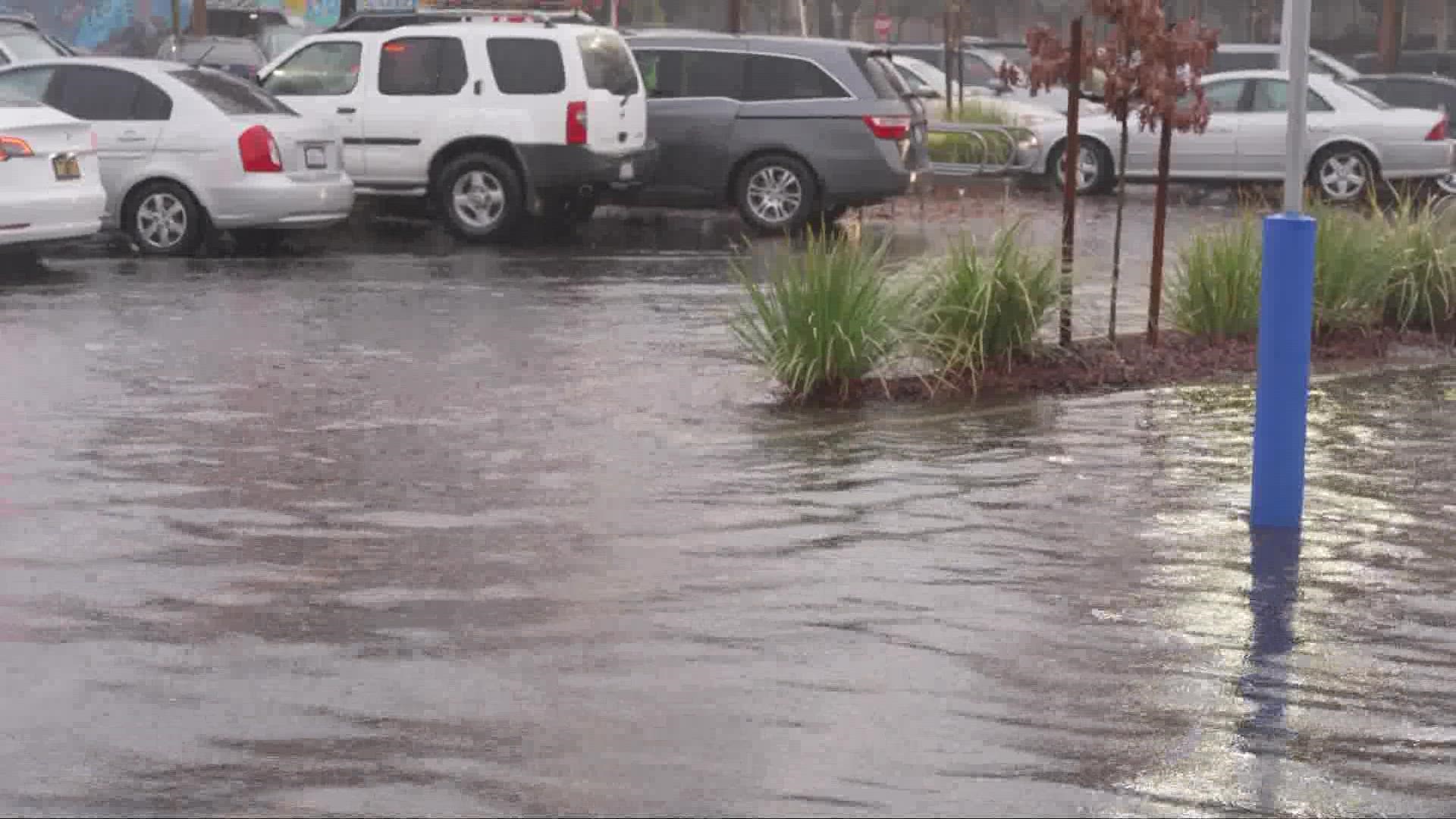SACRAMENTO, Calif. — A winter storm is bringing much needed rain to the valley and snow to higher elevations this weekend, but it also creates the potential for unsafe driving conditions. Drivers may encounter limited visibility, hydroplaning and accidents.
Henning Mortensen, owner of Bond Driving School, said staying safe while driving in the rain involves being cautious, but also preparing your vehicle before the rain even comes down. Make sure windshield wipers working, check tire treads and keep car maintenance up to date.
If it starts raining, Mortensen says slowing down is crucial. Allow more distance between yourself and the car in front of you as well.
If you see water collecting on the roads, Mortensen recommends avoiding standing water or areas where water pools.
“We don’t know what’s underneath those standing waters. It could be debris, it can be things that are falling off of the trees, limbs. It can really damage your vehicle," said Mortensen.
Hydroplaning is also common in wet conditions.
“Hydroplane is losing ability to have friction with the ground so you're actually riding on top of the water. The only way to get out of hydroplaning is with steering," he added.
If caught hydroplaning, do not accelerate and do not brake. Simply take your foot off the pedals and carefully, without any drastic movements, steer out of the water.
Mortensen also said to keep your headlights and windshield wipers on for better visibility.
If you're planning on driving in the snow, AAA has the following safety tips:
- Stay home. Only go out if necessary. Even if you can drive well in bad weather, it’s better to avoid taking unnecessary risks by venturing out.
- Drive slowly. Always adjust your speed down to account for lower traction when driving on snow or ice.
- Accelerate and decelerate slowly. Apply the gas slowly to regain traction and avoid skids. Don’t try to get moving in a hurry and take time to slow down for a stoplight. Remember: It takes longer to slow down on icy roads.
- Increase your following distance to five to six seconds. This increased margin of safety will provide the longer distance needed if you have to stop.
- Know your brakes. Whether you have antilock brakes or not, keep the heel of your foot on the floor and use the ball of your foot to apply firm, steady pressure on the brake pedal.
- Don’t stop if you can avoid it. There’s a big difference in the amount of inertia it takes to start moving from a full stop versus how much it takes to get moving while still rolling. If you can slow down enough to keep rolling until a traffic light changes, do it.
- Don’t power up hills. Applying extra gas on snow-covered roads will just make your wheels spin. Try to get a little inertia going before you reach the hill and let that inertia carry you to the top. As you reach the crest of the hill, reduce your speed and proceed downhill slowly.
- Don’t stop going up a hill. There’s nothing worse than trying to get moving up a hill on an icy road. Get some inertia going on a flat roadway before you take on the hill.
To learn more about winter driving, click HERE.
Watch more from ABC10: More rain and snow hitting Northern California this weekend | Winter Storm



















